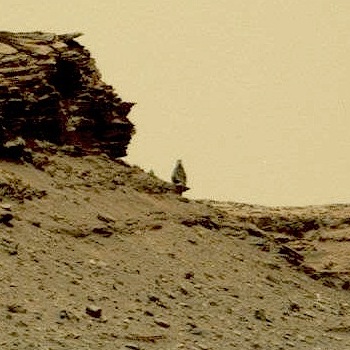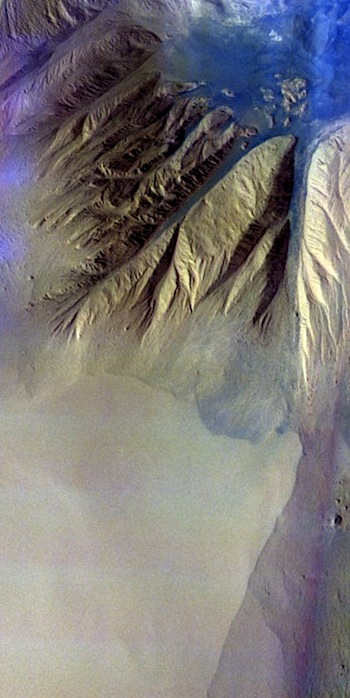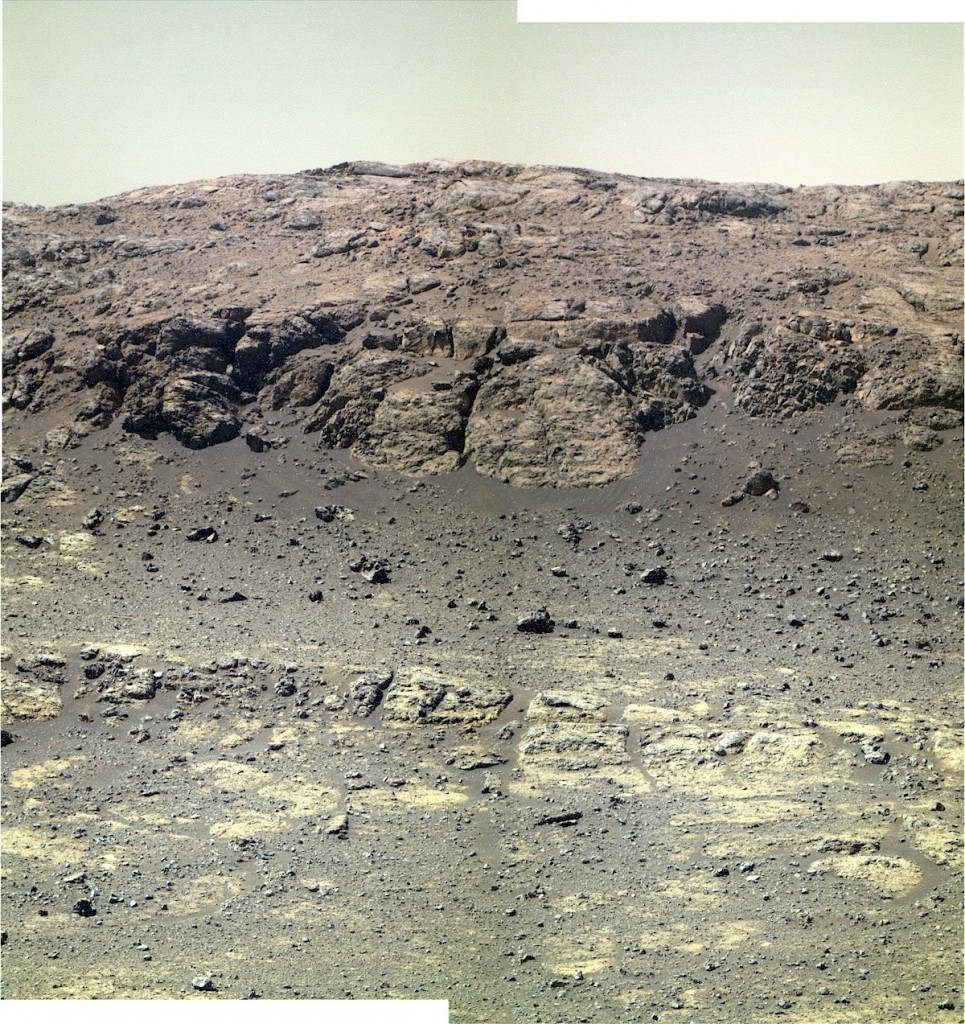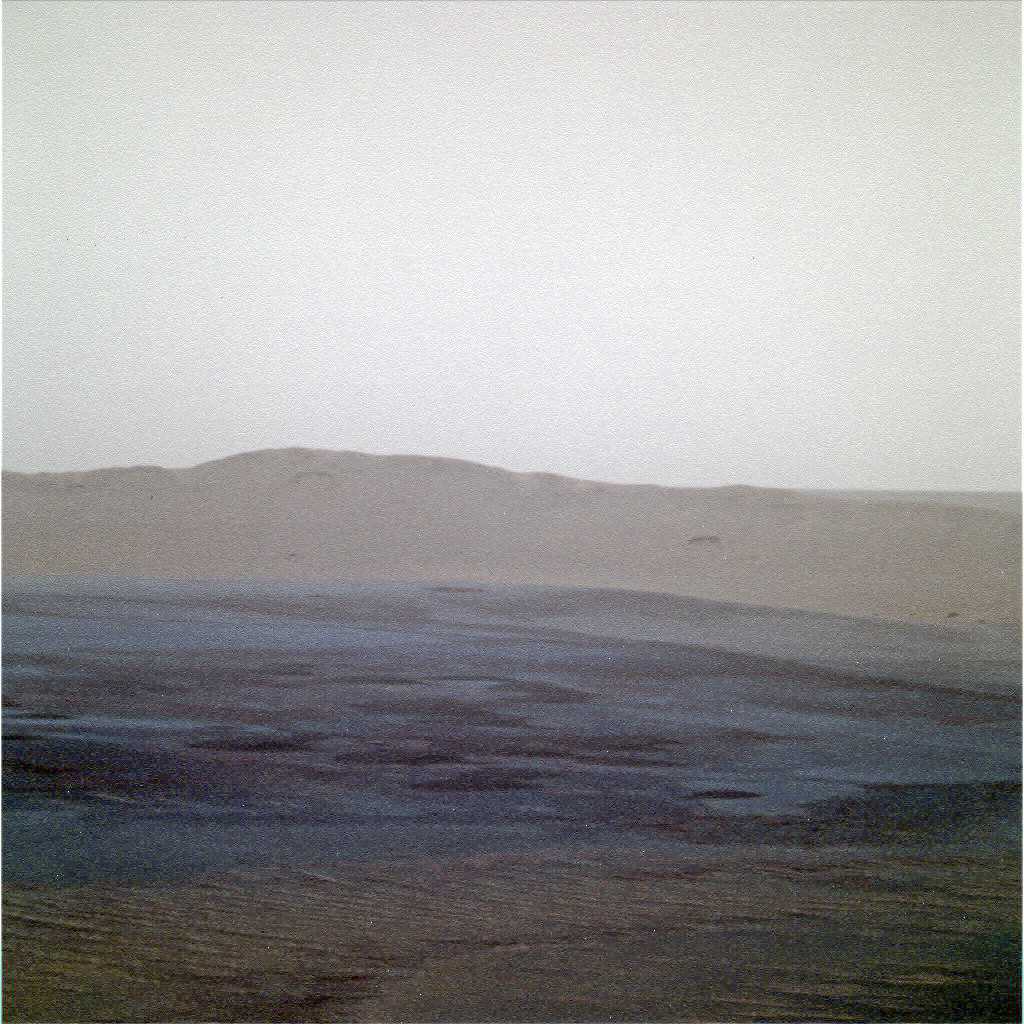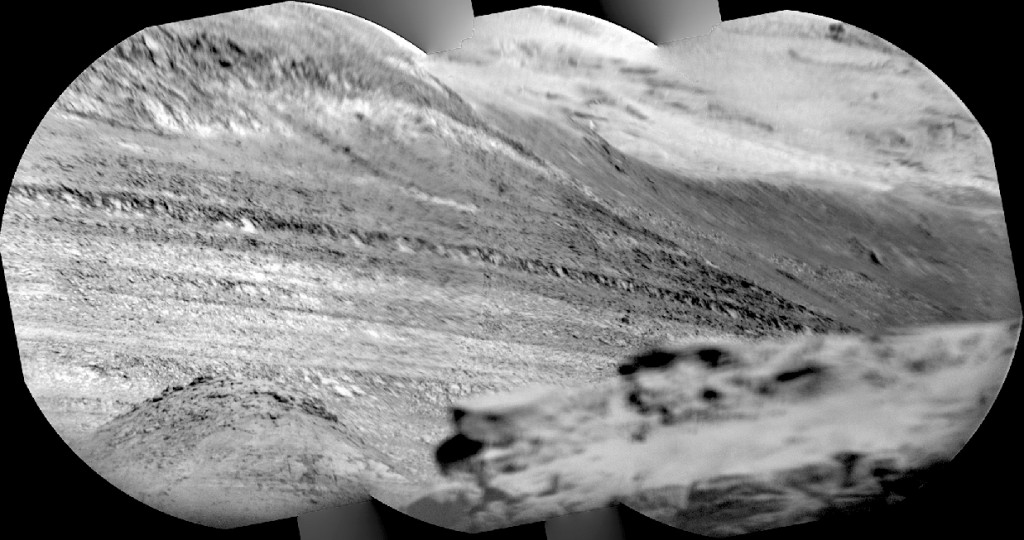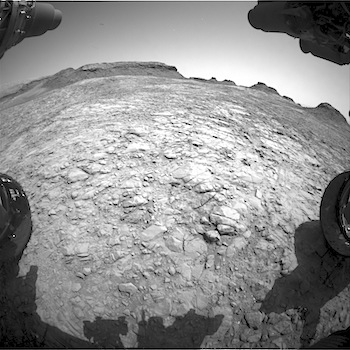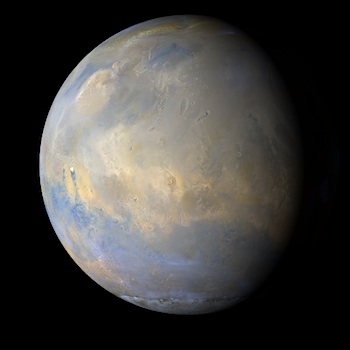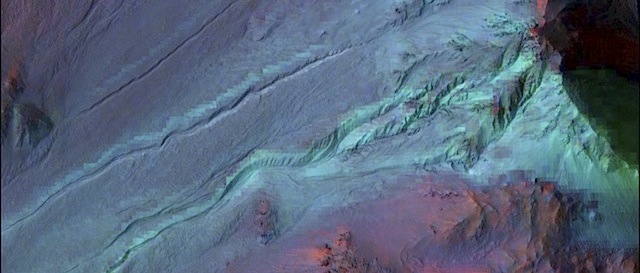 New findings using data from NASA’s Mars Reconnaissance Orbiter show that gullies on modern Mars are likely not being formed by flowing liquid water. This new evidence will allow researchers to further narrow theories about how Martian gullies form, and reveal more details about Mars’ recent geologic processes. [The findings were published in Geophysical Research Letters.]
New findings using data from NASA’s Mars Reconnaissance Orbiter show that gullies on modern Mars are likely not being formed by flowing liquid water. This new evidence will allow researchers to further narrow theories about how Martian gullies form, and reveal more details about Mars’ recent geologic processes. [The findings were published in Geophysical Research Letters.]
Scientists use the term “gully” for features on Mars that share three characteristics in their shape: an alcove at the top, a channel, and an apron of deposited material at the bottom. Gullies are distinct from another type of feature on Martian slopes, streaks called “recurring slope lineae,” or RSL. (…)
The findings showed no mineralogical evidence for abundant liquid water or its by-products, thus pointing to mechanisms other than the flow of water — such as the freeze and thaw of carbon dioxide frost — as being the major drivers of recent gully evolution.
“The HiRISE team and others had shown there was seasonal activity in gullies — primarily in the southern hemisphere — over the past couple of years, and carbon dioxide frost is the main mechanism they suspected of causing it. However, other researchers favored liquid water as the main mechanism,” said Jorge Núñez of APL, the lead author of the paper. (…) “To bring another important piece in to help solve the puzzle, we used CRISM, an imaging spectrometer, to look at what kinds of minerals were present in the gullies and see if they could shed light on the main mechanism responsible.”
Núñez and his colleagues took advantage of a new CRISM data product called Map-projected Targeted Reduced Data Records. It allowed them to more easily perform their analyses and then correlate the findings with HiRISE imagery. [More at links; see also here]










